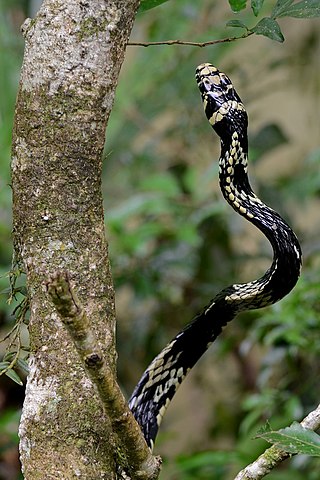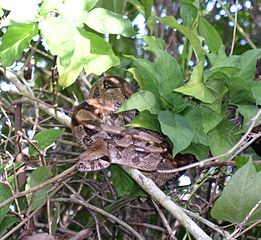The first time I saw an adult Tiger Ratsnake (Spilotes pullatus pullatus) streaking through the brush in Costa Rica, I was immediately struck by the appropriateness of its local name – the Thunder and Lightning Snake. Large, fast-moving, and eye-catching in coloration, this impressive beast stopped me in my tracks and made me gasp. I’d captured dozens of adult Green Anacondas and handled thousands of other snakes in zoos and the wild, but this Tiger Ratsnake was in a class by itself. Small wonder that it draws attention throughout its huge range, where it is known by many common names, including Tropical Ratsnake and Tropical Chicken Snake (the latter refers to its food preference on farms). The first individual I encountered eluded me, but I was eventually able to get my hands on other wild specimens, and to care for a few in captivity.
Description
Although not usually classified among the “giant serpents”, the Tiger Ratsnake is actually one of the longest snakes in the Americas. Adults average 6-7 feet in length, but may reach 10 feet; 14-foot-long individuals have been reported. They vary a good deal in color and pattern, but whether lemon-yellow with indigo-blue blotches or solid black speckled with orange, they are always stunning. Read More »
 That Reptile Blog – Reptile, Amphibian and Exotic Pet Care and Information
That Reptile Blog – Reptile, Amphibian and Exotic Pet Care and Information




